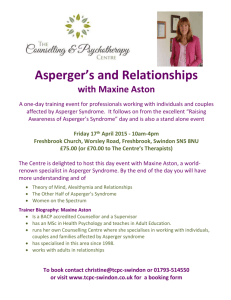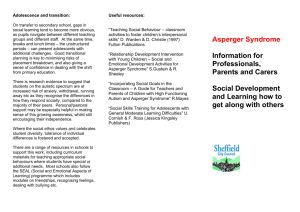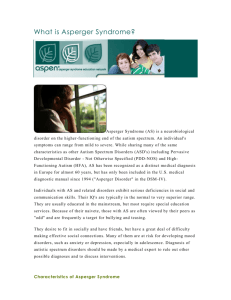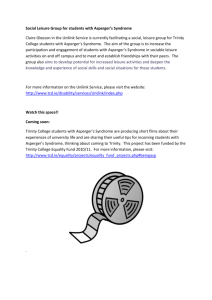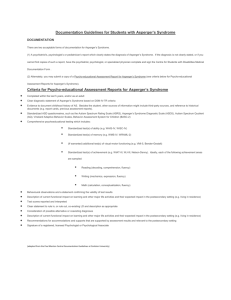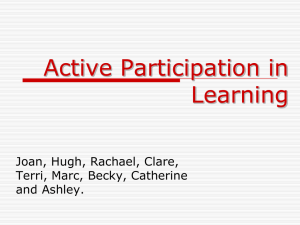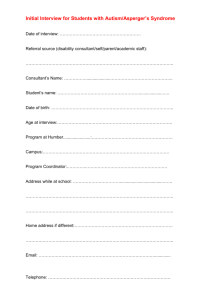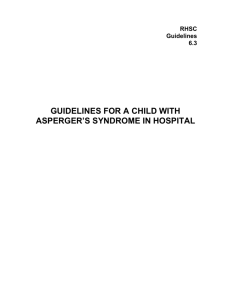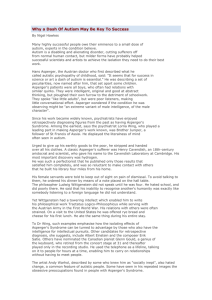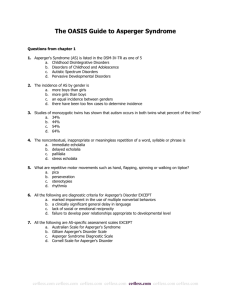What is Asperger syndrome?
advertisement
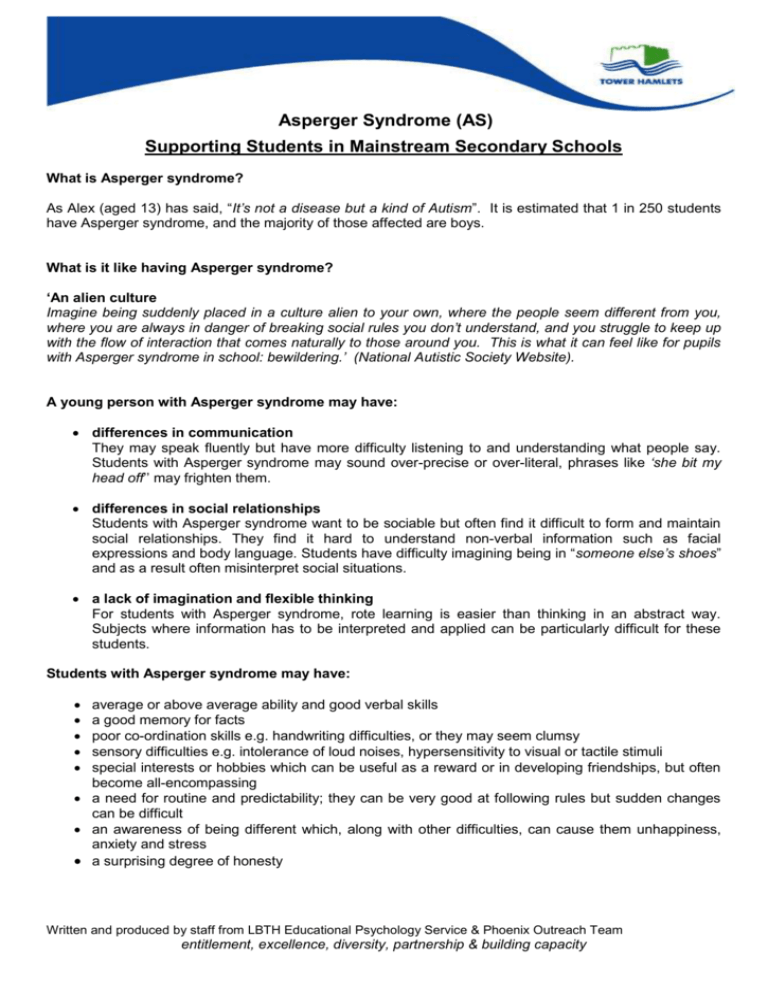
Asperger Syndrome (AS) Supporting Students in Mainstream Secondary Schools What is Asperger syndrome? As Alex (aged 13) has said, “It’s not a disease but a kind of Autism”. It is estimated that 1 in 250 students have Asperger syndrome, and the majority of those affected are boys. What is it like having Asperger syndrome? ‘An alien culture Imagine being suddenly placed in a culture alien to your own, where the people seem different from you, where you are always in danger of breaking social rules you don’t understand, and you struggle to keep up with the flow of interaction that comes naturally to those around you. This is what it can feel like for pupils with Asperger syndrome in school: bewildering.’ (National Autistic Society Website). A young person with Asperger syndrome may have: differences in communication They may speak fluently but have more difficulty listening to and understanding what people say. Students with Asperger syndrome may sound over-precise or over-literal, phrases like ‘she bit my head off’’ may frighten them. differences in social relationships Students with Asperger syndrome want to be sociable but often find it difficult to form and maintain social relationships. They find it hard to understand non-verbal information such as facial expressions and body language. Students have difficulty imagining being in “someone else’s shoes” and as a result often misinterpret social situations. a lack of imagination and flexible thinking For students with Asperger syndrome, rote learning is easier than thinking in an abstract way. Subjects where information has to be interpreted and applied can be particularly difficult for these students. Students with Asperger syndrome may have: average or above average ability and good verbal skills a good memory for facts poor co-ordination skills e.g. handwriting difficulties, or they may seem clumsy sensory difficulties e.g. intolerance of loud noises, hypersensitivity to visual or tactile stimuli special interests or hobbies which can be useful as a reward or in developing friendships, but often become all-encompassing a need for routine and predictability; they can be very good at following rules but sudden changes can be difficult an awareness of being different which, along with other difficulties, can cause them unhappiness, anxiety and stress a surprising degree of honesty Written and produced by staff from LBTH Educational Psychology Service & Phoenix Outreach Team entitlement, excellence, diversity, partnership & building capacity Strategies that can support students with Asperger syndrome All staff need to be consistent in their approach. Adaptation is the key for successful inclusion of students with Asperger syndrome in secondary schools. Each student with Asperger syndrome is individual and the adaptation of the school environment will vary according to their particular needs. The school environment, especially during puberty, can be very stressful for students with Asperger syndrome and they display their anxiety through their behaviour. Anxiety can be reduced in the following areas: Communication Information from primary school and parents can help initial discussions with school staff Appointment of a Key Worker who liaises regularly with student and/ or family Any changes in the student’s behaviour indicate that something is the matter and should be discussed with the Key Worker promptly Students should be given advance warning of any changes to their usual routine. Written instructions are very helpful e.g. what to do if there’s a fire drill Regular discussions between school staff about student progress, successful classroom strategies/ practices and shared targets School Environment Developing familiarity with the school before starting Practising movement around the school e.g. from one part of the building to another Ways of avoiding potentially stressful situations e.g. leaving class a few minutes early to avoid crowded corridors, having a ‘quiet’ place to go at lunchtimes and break; special arrangements for changing and toilets Familiarity with the timetable and use of a planner Provision of secure space to keep bag/ coat Learning Environment Keep language clear Tasks need to be structured. Open-ended tasks are more difficult for these students Plan opportunities to apply skills and knowledge to new situations Written information about classroom rules, lesson aims and objectives, homework assignments Seating – sit student facing the board, with sufficient personal space and minimal distractions. Some students prefer sitting on their own Group work can be very difficult. They may need additional support to participate or be given an option to work on their own Being sensitive to individual needs e.g. not asking direct questions if the student feels this is intrusive; not insisting on eye-contact For difficult situations identify the problem area and adapt the environment e.g. where a child is reluctant to write by hand use alternative methods of recording Peer Relationships Peers can be very effective in supporting students with Asperger syndrome in all areas of schooling. A Circle of Friends could help in transition between lessons or advocate for the student. A Buddy system* could help recording homework Peers should have an understanding/ access to information about Asperger syndrome in general and how it applies to the student in their form (with parental permission) Students with Asperger syndrome often benefit from using Social Stories* to manage difficult situations Working with students with Asperger syndrome can be very rewarding and they can make a positive contribution both in the classroom and the whole school community. *For further information ask the SENCO, or external agencies such as Phoenix Outreach Team, Educational Psychology Service, Speech & Language Therapy Service, Language & Communication Team
